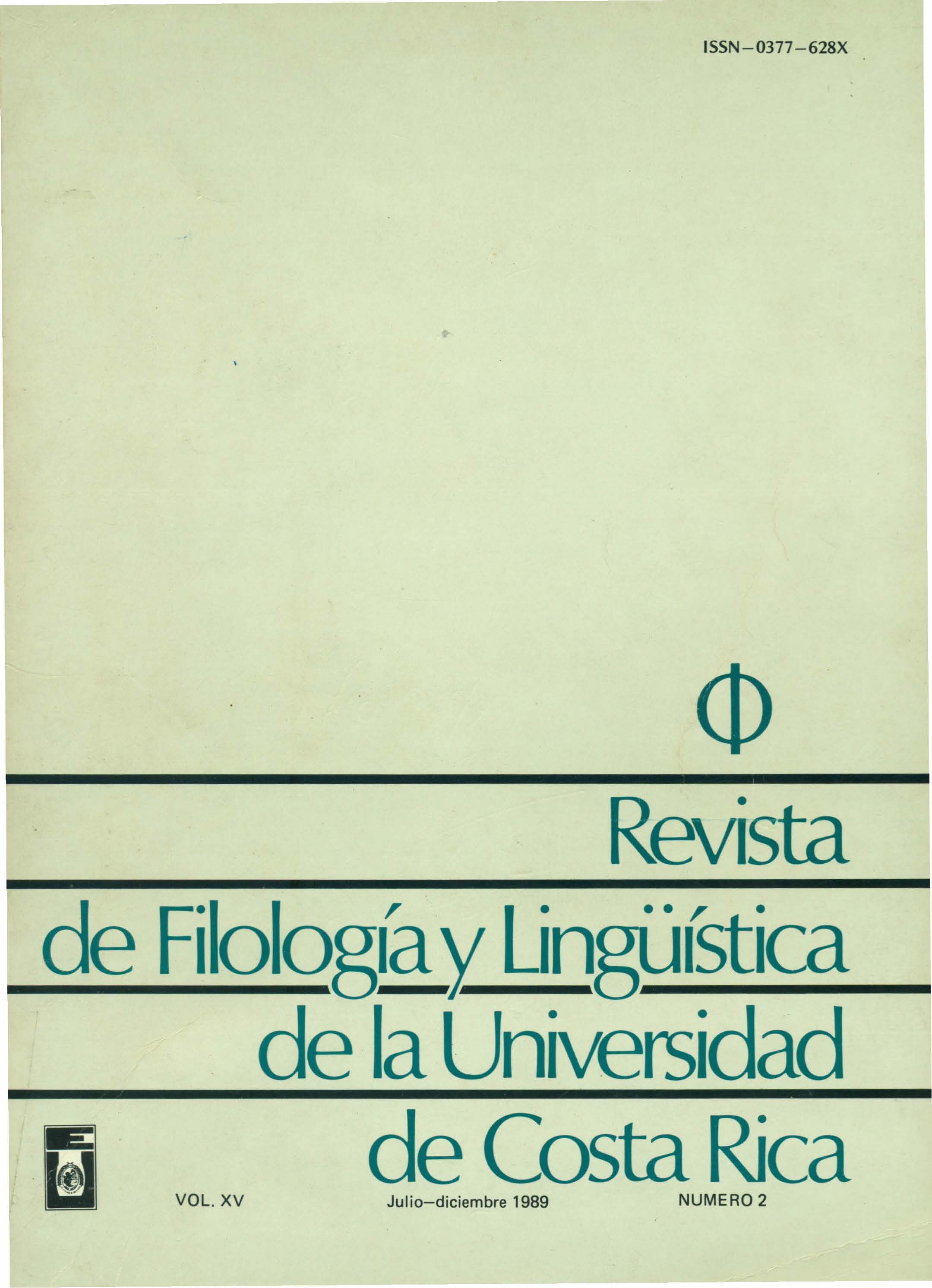Resumen
In this article 1 analyze ethica1 and didaáic tales taken from Leyendas y tradiciones de los borucas,
(Constenla and Moroto: 1979) and four narraúves published by Constenla in 1986. The method used
is that of Greimas. The purpose of the study was 10 discover whether this method is applicable 10 traditional
stories belonging to non-European cultures. The method was indeed applicable, and it was discovered
that in these stores the actant subject, which is positive in European folklore, is negative in the
stories analyzed here and is regularly fused with the figure of the dispatcher. It as also established that
the helper is practically absent and the opponent -who is negative in the European tradition- is
positive among the Borucas. Generally speaking, Borucan narratives are structurally quite simple.
However there is frequent syncretism among the various actants.
Citas
Beristáin, H. 1984. Análisis estructural del relato literario. Teoria y práctica. Instituto de Investigaciones Filológicas, Universidad Autónoma de México, México.
Constenla, A. Y Espíritu S. Maroto. 1979. Leyendas y tradiciones borucas. Editorial de la Universidad de Costa Rica. Ciudad Universitaria Rodrigo Facio, Costa Rica.
Constenla, A. 1986. "Textos bilingües de cuatro narraciones tradicionales borucas", en Revista de Filología y Lingüística de la Universidad de Costa Rica XII (1):79-101.
Greimas, A.l. 1971. Semántica estructural. Madrid: Editorial Gredos.
Meletinski, E. 1972. Estudio estructural y tipológico del cuento. Buenos Aires: Rodolfo Alonso, Editor S.R.L.
Lázaro-Carreter, F. 1971. Diccionario de términos filo lógicos. Madrid: Ed. Gredos.
Propp, V. 1972. Morfología del cuento. Buenos Aires: luan Goyanarte - Editor.
Víquez, G.B. 1976. Los cuentos de mi tía Panchita. Modelo, género, interpretación. Tesis. Universidad de Costa Rica.

